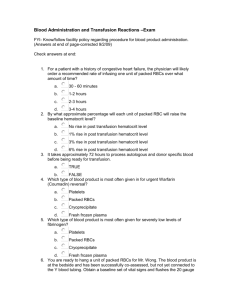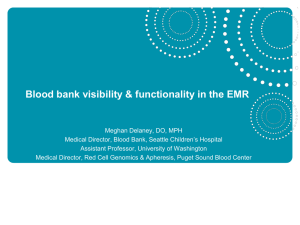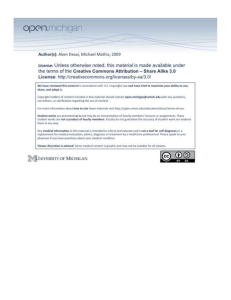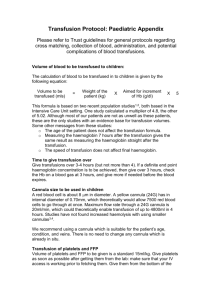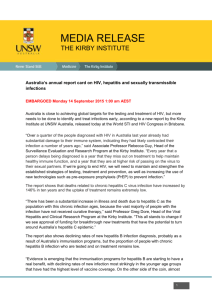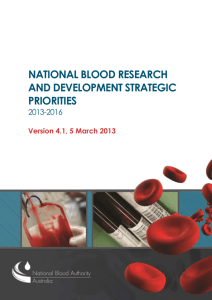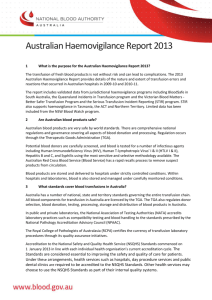Blood Risk Estimates
advertisement
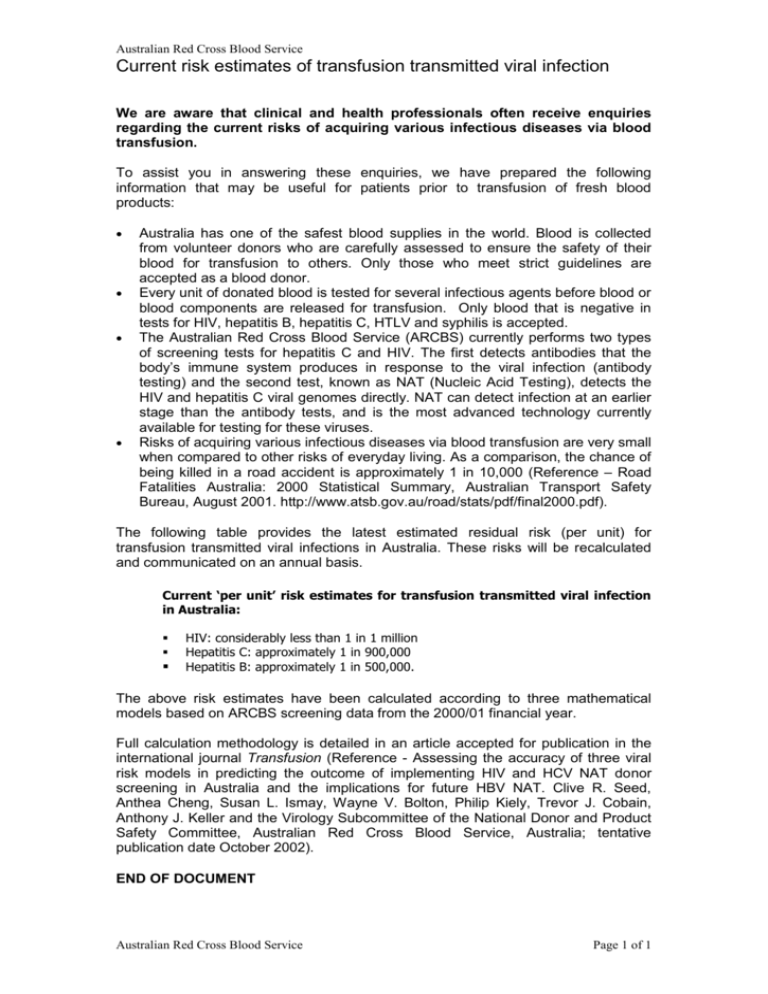
Australian Red Cross Blood Service Current risk estimates of transfusion transmitted viral infection We are aware that clinical and health professionals often receive enquiries regarding the current risks of acquiring various infectious diseases via blood transfusion. To assist you in answering these enquiries, we have prepared the following information that may be useful for patients prior to transfusion of fresh blood products: Australia has one of the safest blood supplies in the world. Blood is collected from volunteer donors who are carefully assessed to ensure the safety of their blood for transfusion to others. Only those who meet strict guidelines are accepted as a blood donor. Every unit of donated blood is tested for several infectious agents before blood or blood components are released for transfusion. Only blood that is negative in tests for HIV, hepatitis B, hepatitis C, HTLV and syphilis is accepted. The Australian Red Cross Blood Service (ARCBS) currently performs two types of screening tests for hepatitis C and HIV. The first detects antibodies that the body’s immune system produces in response to the viral infection (antibody testing) and the second test, known as NAT (Nucleic Acid Testing), detects the HIV and hepatitis C viral genomes directly. NAT can detect infection at an earlier stage than the antibody tests, and is the most advanced technology currently available for testing for these viruses. Risks of acquiring various infectious diseases via blood transfusion are very small when compared to other risks of everyday living. As a comparison, the chance of being killed in a road accident is approximately 1 in 10,000 (Reference – Road Fatalities Australia: 2000 Statistical Summary, Australian Transport Safety Bureau, August 2001. http://www.atsb.gov.au/road/stats/pdf/final2000.pdf). The following table provides the latest estimated residual risk (per unit) for transfusion transmitted viral infections in Australia. These risks will be recalculated and communicated on an annual basis. Current ‘per unit’ risk estimates for transfusion transmitted viral infection in Australia: HIV: considerably less than 1 in 1 million Hepatitis C: approximately 1 in 900,000 Hepatitis B: approximately 1 in 500,000. The above risk estimates have been calculated according to three mathematical models based on ARCBS screening data from the 2000/01 financial year. Full calculation methodology is detailed in an article accepted for publication in the international journal Transfusion (Reference - Assessing the accuracy of three viral risk models in predicting the outcome of implementing HIV and HCV NAT donor screening in Australia and the implications for future HBV NAT. Clive R. Seed, Anthea Cheng, Susan L. Ismay, Wayne V. Bolton, Philip Kiely, Trevor J. Cobain, Anthony J. Keller and the Virology Subcommittee of the National Donor and Product Safety Committee, Australian Red Cross Blood Service, Australia; tentative publication date October 2002). END OF DOCUMENT Australian Red Cross Blood Service Page 1 of 1


